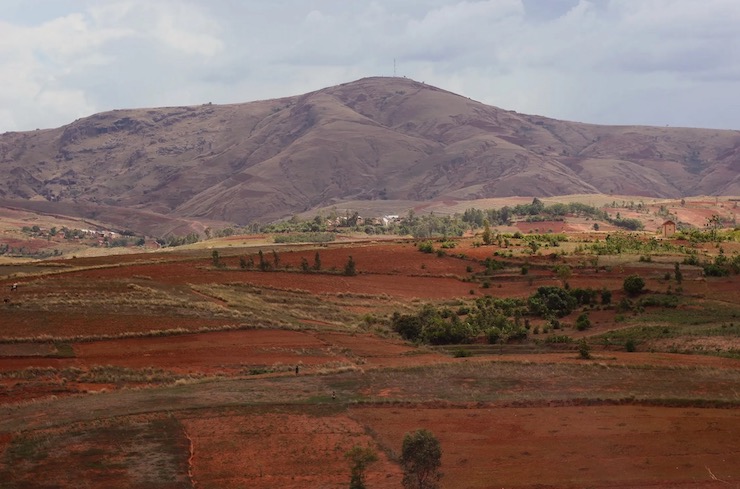
Deforestation is an ongoing problem that is affecting the entire world. Whether we realize it or not, every human on this planet is reliant on forest resources in one way or another. While less than 5% of the planet’s original forest still stands, these remaining forests serve as major carbon sinks. Naturally absorbing carbon dioxide in the atmosphere, forests are responsible for providing us with an ecological balance necessary for all life forms. Forests are reducing at alarming rates due to natural disasters like wildfires and human influence like expansive urbanization, and the illegal cutting down of trees. When mass stretches of forests are destroyed, it is not only the trees that are sacrificed.
These forests are the homes of countless animals, many that have now become endangered due to loss of habitat. The trees provide the structures needed for all kinds of plants and a multitude of microorganisms. Once a forest becomes barren, the soil that once supported it begins to erode and loses the ability to sustain life. Around the world, efforts to restore forests are underway to protect animal and plant species, reverse soil degradation, and minimize climate change.
Over the last decade, the East African island Madagascar has lost 23% of its forests, prompting conservationists to fear that if drastic measures aren’t taken soon, the nation’s remaining forests will succumb within a few decades. In 2019, President Andry Rajoelina stated the country’s plan to replant 40,000 hectares of forests within 5 years. The project has already begun, but as Prime Minister Christian Ntsay announced on June 23, 2020, the reforestation project is about to get a helping hand from drones to ensure its success.
The Prime Minister said that the country has a goal of growing 60 million seedlings a year. President Rajoelina is calling on everyone in Madagascar to see the yearly goal of 40,000 hectares met. He said, “To do this we will mobilize all our citizens for this collective reforestation. Every Malagasy will have to plant 5 trees minimum per year.” All the trees and materials needed for planting will be provided by the government free of charge, an initiative that citizens are in strong support of. But after having enlisted drones to help in the wake of previous natural disasters, Prime Minister Ntsay and President Rajoelina realized that drones could once again lend the technology needed to complete the task.
The government of Madagascar has allocated the funds for 10 drones capable of planting up to 400,000 tree seeds a day. Though the specific drones being purchased have not been released, it is very likely they could be from Dendra Systems, the number one drone system for reforestation. Founded by Susan Graham and Matthew Richie in 2014, and originally known as BioCarbon Engineering, Dendra is changing the way conservationists manage reforestation. As stated on their website, “We are building the most powerful tools for ecosystem restoration today. We combine decades of research in ecology and land restoration with cutting edge artificial intelligence and drone technologies to speed up and scale up land rehabilitation.”
Made up of experts in ecology, software AI engineers, hardware engineers, and drone operators, Dendra provides government and private enterprises with drones that do more than just plant seeds. They use drones to first create topographical maps of regions to be planted. These maps not only give ecologists an idea of where to position plants, but the sensors on the drones provide data on soil health, hydration levels, and erosion levels. The drone’s software also identifies all plants growing in the area that could harm new tree growth, such as weeds. This information can then be used to generate weed management plans to see that saplings have the chance to grow into viable trees.
Once the topographic maps are generated, Dendra uses another drone to physically plant the seeds. Each seed that the drone carries is encased in a biodegradable capsule. The capsule contains all the nutrients to see that the seed develops and takes root. Following a predetermined route, the drone fires a single seed capsule at a time into the ground based on specific GPS locations. This placement ensures that each seed will grow with plenty of space to spread out roots and stabilize the soil. The drones can plant thousands of seed capsules in a matter of minutes, a job that would take weeks to do manually.
Being able to plant trees like this is especially important for areas that are difficult to reach, such as the case for much of the regions to be replanted in Madagascar. The government has designated 22 regions to be reforested throughout Madagascar, some of which are inaccessible to crews for manual planting. With the drones, there will be no limit to where Madagascar can start planting lush green forests. Madagascar is called the Red Island because of the expanses of red, sandy soil that covers much of the island. At a press conference discussing the reforestation plans, President Rajoelina said with hope in his voice, “If before we called Madagascar the Red Island, from now all will call her the Green Island.” With the collaboration of humans working together and drone technology, Madagascar’s success at reforestation can very likely be met within the 5 year timeline the President has set forth.
|